
by Jennifer Wolkin | May 4, 2020 | Mindfulness, Stress, Wellness
I am writing to you at this unprecedented time in our history. A time of collective, global trauma. We’re scared. We’re vulnerable. We’re mentally exhausted. People are saying to stay positive, but I want to validate your emotions, you are safe from the catchphrase ‘good vibes only’ here.
There is so much beyond our control these days. As humans, we don’t like uncertainty at the best of times, at baseline. We thrive on timelines and surefire deadlines. So we are all trying our best to find equanimity, mental calmness, amidst this uncertainty.
It is my hope that these 17 #StayCovidCalm actionable tips, that you can take today, will help you focus on treating yourself with kindness during this difficult time. You don’t have to have a productive pandemic, just take care of yourself to the best of your abilities, and that’s more than enough.
Set media/news boundaries:
Be very discerning of the media you are consuming (stick to known reliable sources), and set boundaries around when and how you consume media. I’d recommend not to watch it right before sleep, and to set specific times during the day to read or watch and have a cut-off time.
- It won’t help to check news every 15 minutes. This won’t lead to any more productive action, and will only serve to induce panic. Keep yourself updated with ONLY important, helpful facts from well-informed sites. Saturating on social media can literally overwhelm our brains.
- It’s also very reasonable to set boundaries with people who are sending you information. If someone is texting you with information every hour, and it’s creating anxiety, do gently let that person know that this isn’t serving you. Take appropriate action.
- Keep prepared, because it is the mindful thing to do for oneself and society at large. This means do what is recommended with as little worry as possible that you’re not doing enough. If you’re doing what’s recommended, then you are doing enough.
Allow yourself to feel all the feels:
It is not only okay, but a necessity to allow ourselves to experience the gamut of emotions we encounter, and not just try to stay positive and feel “good vibes only,” which sometimes is a message we confront on social media. Allowing ourselves to feel all we are feeling, without shame or judgment, and then seeing that we can move through these emotions, is essential for mental health right now. Our mind space is big enough for all the feels, even seemingly contradictory ones. In fact, allowing space for them is healthy. I call this “feelings the ands”, as in, “I feel this AND this.”
Practice gratitude:
while it is important to allow yourself to have all the feels, it can ALSO help to take a moment to consciously express gratitude at least once each day and to take perspective. So, before you go to sleep, or after waking up, see if you can list and reflect upon three things in that very moment you feel grateful for and, if needed, you can use the same three each time. Examples include: loved ones, health, healthcare providers, leadership during this time, roof over one’s head, groceries, grocery shop personnel, the sun coming out, a breeze, the warming weather.
Create structure and routine as much as possible:
At baseline our brain’s like a sense of routine, it helps maintain perceived control, and our brain veers towards “order”, especially during a time of great uncertainty. Of all times, this is a time to build in some kind of routine to your day. This could mean going to sleep and waking up at the same time. This could mean doing virtual work in the same space every day. This could even look like a scheduled afternoon walk, as long as we are abiding by social distancing.
Virtually connect:
Social connection is paramount during this time. Even if it’s not your ideal to connect virtually, give yourself a healthy push to reach out to be in touch with and be held by a community. Even if we don’t love it, we must push ourselves to connect with others – social connection is key and crucial, even virtually. It may not be ideal but it is something that will keep you safe and healthy.
Find creative outlets:
Creative expression connects us back to ourselves. It also allows us to use our mind in ways that promote a sense of freedom in a time when we are feeling locked down.
Journal:
Record history from your first-person perspective if this will help you create a sense of purpose. During so much unknown, having a call to action that creates a sense of meaning can go a really long way towards lifting depressed feelings.
Pray:
Reach out to whatever you believe is out there that is greater than you. This allows us to surrender some of the burden that we might feel to have all the answers, and the need to problem solve and fix what is beyond our power to do so.
Connect to something greater/give back:
Asking how can I be of service often helps us get outside our own selves and can soften depression and anxiety. It gives us a sense of purpose, to create meaning at a time when not much seems to make sense.
Focus on what we can control vs. what we can’t:
There is so much we can’t control now, and also, at the same time, we have been given guidelines to adhere to. If we allow ourselves to follow what’s recommended, and surrender into the knowing that we can’t control much more, we might feel some anxiety relief.
Practice radical acceptance:
Practice radically accepting the present-moment for what it is. This doesn’t mean we roll over and passively resign to whatever circumstances we are experiencing. What it means is totally and completely accepting that the reality of this moment, is, in fact, the reality of this moment, and that to resist present-moment reality is not only impossible, but creates stress. Radical acceptance is a practice based on the idea that although we can’t control for the most part how life unfolds, we can, in fact, control how we perceive or react to life unfolding. Fighting against reality, even if said reality is painful, is likely to cause suffering beyond that of the reality itself.
Exercise:
Both weight training and cardio have mental health benefits. This can mean jumping jacks or jogging in place, or using weights you have at home while following along to a YouTube guided workout. Many gyms are also doing virtual sessions. Weight training exercise is a life force and a crucial part of mind-body-brain hygiene. Exercise has been shown to raise serotonin levels, the neurotransmitter that many antidepressants focus on producing. Exercise can also elicit endogenous endorphins, the body’s natural painkillers, and of course, bring more oxygenated blood to the brain.
Stretch:
Just as crucial as exercise is, so is stretching regularly, to ease tension and stiffness, especially if we are sitting more while in quarantine. Particularly, try to make time to stretch my psoas muscles. They are the only muscles that connect the spine to the legs, attaching from the 12th thoracic vertebra to the 5th lumbar vertebra through the pelvis and down to the femurs. Needless to say, the psoas muscles, therefore, play a crucial role in one’s core structural wellness, especially the psoas major, the biggest muscle of the group.
- The absolutely mind-blowing understanding regarding the psoas muscles though, is that they have been actually touted as instrumental to one’s mental well-being as well! The psoas muscles flank the diaphragm and the many connections between the psoas muscles and the diaphragm literally link these muscles to our breath, which is sensitive to fear. When we are in a state of fear, the breath is shallow and constricted, and the diaphragm isn’t being used to take deeper, calming breaths. The psoas feels this, and holds the fear. This means that if we are in a constant fight or flight mode, due to chronic stress, then our psoas muscles are also chronically stressed and constricted. This would also mean that an over-constricted psoas, caused by poor posture for example, could actually elicit fear.
- So, after hours and hours of sitting in a position that constricts our psoas muscles, it’s no wonder we have a visceral feeling of tension that seems to envelop our minds, bodies, and brains. Stretching my psoas is literally like a sigh of relief. There are videos online to help guide in how to find the psoas and how to stretch it with the most significant impact.
Maintain physical wellness:
Mental health and medical health are inextricably intertwined.
- Eat regular meals: Try to eat set meals to nourish yourself. If you tend to overeat during a stressful time, see if you can take a step back, and self-soothe with other more adaptive techniques like breathwork, or distracting with a conversation with a friend. If you do eat more than you want, don’t judge yourself. This is an ongoing practice.
- Limit caffeine: If you tend to panic, watch your coffee intake. Stick to one cup a day or less.
- Support your immune system through diet: Of course, ask your general practitioner, certified health coach, nutritionist or functional medicine doctor before you make any changes to your regimen. Generally speaking, I suggest whole grains, high protein, berries, leafy greens, including spinach and kale.
- Decrease processed sugar: Processed sugar is highly inflammatory, and does not support immunity, and can also lead to mental health challenges.
- Supplements: I defer to your general practitioner here too, however, generally speaking Vitamin C, D3, and Zinc has been suggested to boost immunity. Turmeric and ginger can also play an anti-inflammatory role.
Maintain mental health care:
Maintain all regimens you were usually doing for mental health. Sometimes in crisis we let things slide, but please continue your psycho-pharmacology regimen if you have one. If you have a therapist, connect virtually. If you don’t have a therapist, you can still find one during this time, many are taking new patients even virtually. Psychologytoday.com has a search engine for therapists in your area. Also, talkspace.com and betterhelp.com are great options.
Be gentle, be gentle, be gentle:
I listed a lot of things. But ABOVE all, be gentle with yourself. Find adaptive ways to cope, and also, if you are just able to get by and breathe and do the best you can, it’s okay. There is no end to the beginnings we can take. In any moment, we can try to engage in these coping skills, and if the next moments they seem harder, we can try again in another.
Practice mindfulness and mindful living:
Whether we use an app to help guide us through a mindfulness practice, engage in deep diaphragmatic breathing, incorporate mindfulness into any daily activity, or living more mindfully, this is a way to 1. Sit with uncomfortable emotions without needing to escape them 2. Offer oneself gentleness, compassion, and nonjudgment 3. Elicit the relaxation response.
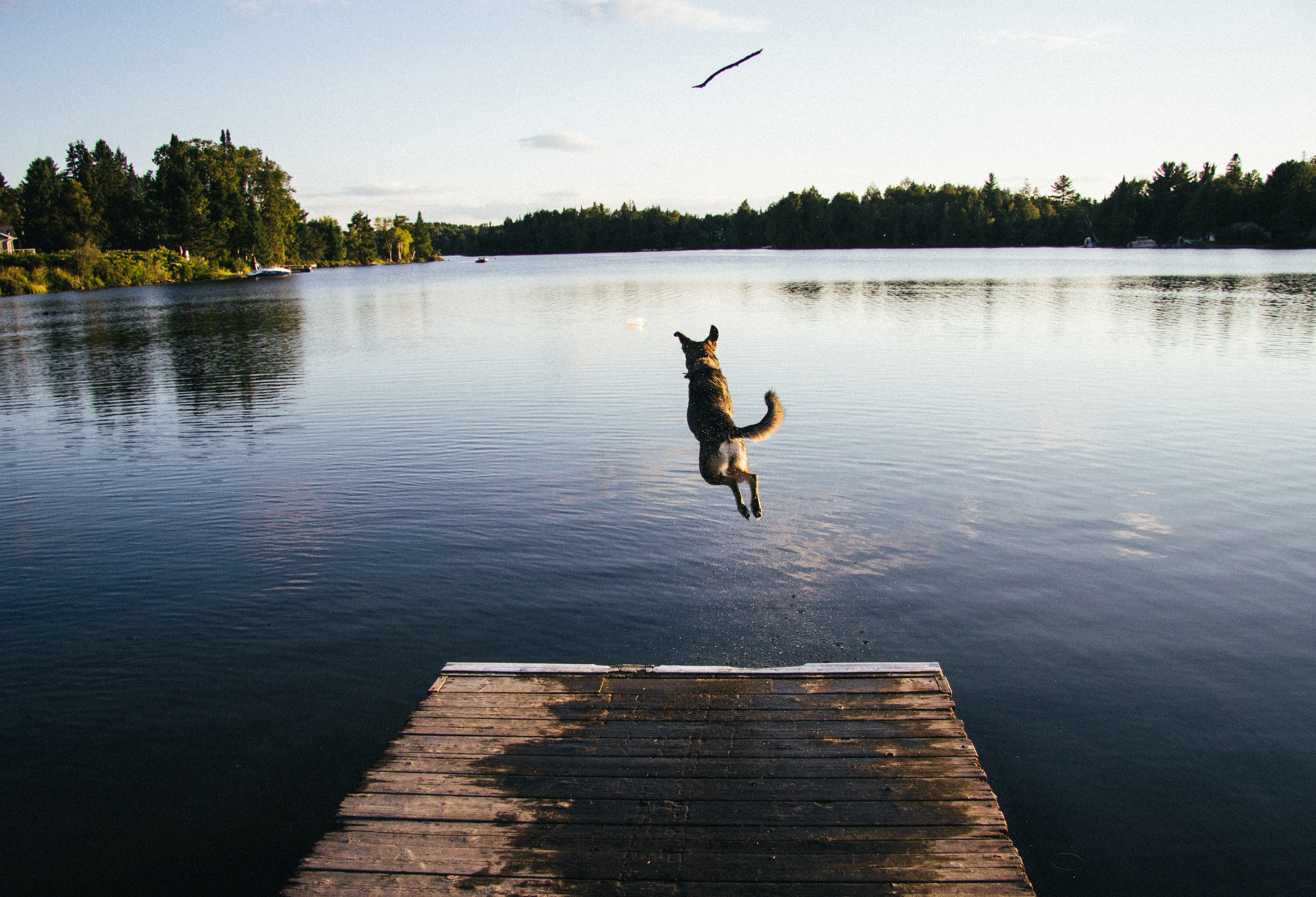
by Jennifer Wolkin | Dec 15, 2016 | Blog, Five to Thrive, Mindfulness, Stress, Wellness
This blog post originally appeared on The Huffington Post.
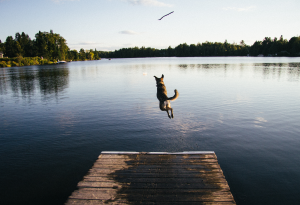
Imagine this:
Finally, after a fulfilling but very long and arduous day of work, and perhaps for some, a foray into getting the kids fed and bathed and to bed, you finally have time for yourself, to unwind, and then eventually, grab some slumber. Sounds dreamy – pun intended. Then imagine the bliss of whatever rest you were able to grab being pulled out from under you by the shrieking of an alarm at the crack of dawn, catapulting your mind and body and brain back to the reality of a new day.
Yes, a new day is theoretically full of potential; a new opportunity to move toward personal and professional goals, a chance to show up for oneself and one’s loved ones with even more compassion and love. Yet, all the newness falls by the wayside as you press the snooze button again, and then are faced with this same jolting shriek-snooze cycle until you finally acquiesce to the call to action to get out of bed and begin the day’s journey.
Not hard to imagine, because this sounds like many of our realities. This daily routine often primes us for anxiety, right upon waking in the morning. Here are some reasons why this time of day is a particularly vulnerable one.
Causes of Early Morning Anxiety
1. Sometimes, the blatant contrast between the sleeping and waking states, often heralded in by the shrieking of an alarm, can be jarring to our senses. In fact, sometimes we are so blindsided by the transition, that we immediately go into fight or flight mode.
2. Fight or flight mode can actually be elicited by the mere fact that our blood sugar has dropped through the night and our brains need more fuel. The symptoms of a low blood sugar response can mimic the feeling of a panic attack, characterized by lightheadedness, dizziness, and increased heart rate.
3. Cognitively, the morning is often the time when we are more apt to engage in unhelpful thinking, given the level of anticipatory anxiety as we envision our to-do lists, and wonder how we are going to get through the day. These kinds of thoughts, though unhelpful, flood our minds in the morning, as we grasp toward trying to leverage control over the rest of the day.
One way to offset this potential morning anxiety is by establishing clear morning rituals to follow as we start to transition into the daylight hours. Aside from just symptom reduction, they also serve as a way to take the time to frame the day in a way that elicits increased overall wellness.
I, therefore, want to share my personal morning routine here with you as an example of how to leverage the rooster within and thrive throughout the day!
Five Ways to Leverage the Rooster Within
BREATHE
Upon waking and feeling any stress or discomfort, my immediate go-to is to find my breath. Engaging the breath provides me with an opportunity to help lower my heart rate that is sometimes elevated in the morning if I’m hyper-aroused out of slumber by a “rude” awakening.
My breath also reminds me that I am alive and that I am able to choose to focus on controlling the sensation of the inhale and the exhale. I like to imagine my breath feeding and rejuvenating my cells with each inhale. It is a great way for me to then literally gain a sense of control to get motivated to start moving in the morning.
For an example of how you can follow this morning routine too, click here for my instructional video of my personally curated breathing exercise.
STRETCH THE PSOAS
Stretching is a great way to relieve the tension or stiffness that’s often entrenched in our body in the morning.
I want to make particular note of how much relief can be felt in stretching the psoas muscles. According to Dr. Christian Northrup, a leading authority in the field of women’s health and wellness, the psoas muscles (pronounced SO-as) may be the most important group of muscles in our body.
They are the only muscles that connect the spine to the legs, attaching from the 12th thoracic vertebra to the 5th lumbar vertebra through the pelvis and down to the femurs. Needless to say, the psoas muscles, therefore, play a crucial role in one’s core structural wellness, especially the psoas major, the biggest muscle of the group.
The absolutely mind-blowing understanding regarding the psoas muscles though, is that they have been actually touted as instrumental to one’s mental well-being as well!
According to Liz Koch, who wrote, The Psoas Book, anatomically speaking, the psoas muscles flank the diaphragm and the many connections between the psoas muscles and the diaphragm literally link these muscles to our breath, which is sensitive to fear. When we are in a state of fear, the breath is shallow and constricted, and the diaphragm isn’t being used to take deeper, calming breaths. The psoas feels this, and holds the fear.
This means that if we are in a constant fight or flight mode, due to chronic stress, then our psoas muscles are also chronically stressed and constricted. This would also mean that an over-constricted psoas, caused by poor posture for example, could actually elicit fear. So, after hours and hours of sitting in a position that constricts our psoas muscles, it’s no wonder we have a visceral feeling of tension that seems to envelop our minds, bodies, and brains.
I adore stretching my psoas major in the morning to start the day. It literally feels like ten big sighs of relief all in one. Want more information on HOW to release and stretch your psoas? Here’s a great video to follow from GuerillaZen Fitness.
EXPRESS GRATITUDE
Many suggest that having The Attitude of Gratitude is the key to a better life. And the research concurs: cultivating gratitude has been linked to better health, sounder sleep, and both decreased anxiety and depression.
In fact, gratitude has become a self-help buzzword. Turns out though that the benefits of saying “thank you” aren’t just grand delusions or a bunch of fluff. According to Robert Emmons, a renowned gratitude expert, gratitude has two parts. He says that first, “it’s an affirmation of goodness. We affirm that there are good things in the world, gifts and benefits we’ve received.” Then, “we recognize that the sources of this goodness are outside of ourselves.”
This definition allows gratitude to become a way for us to appreciate what we have, instead of always reaching for something new in the hopes that it will make us happier. We can definitely feel satisfied EVEN IF our every physical and material need is not met. It also allows us to trust in something greater than us, which can allow us to let go of needing to always control every little detail of our lives, which can be anxiety provoking.
Looking for ways to cultivate gratitude? Here are some examples from Harvard’s Health Newsletter.
At the very least, I like to just simply say “thank you” to whatever out there is greater than I am, for this gift of a new day.
DRINK ESPRESSO – WITH A DASH OF TURMERIC
As you might know if you follow my social media posts and photos, I love my morning espresso routine.
Espresso itself has some touted benefits, but what I really like is the routine. In fact, for the last year or so, I have incorporated espresso into my morning mindfulness meditation practice by really becoming present to every aspect of the process, from the way I fill the water in the machine to the sound the machine makes as the stream of brown sultry liquid emanating from portafilter flows into the shot glass, as the rich crema forms on top, to the aroma, to the first sip.
Aside from this, espresso is rich in antioxidants and boosts the body’s immunity. Yes, there is caffeine, and too much caffeine can mimic the feeling of anxiety, but that is why moderation is important. Just one or two shots of espresso invigorate me to the core, energizing me, and even elicit a sense of cognitive acumen and focus without adding to any morning anxiety. In fact, the ritual relieves me of anxiety, through the mindfulness practice and the promise of the experience each morning (see gratitude!)
I don’t just have espresso though. I try to really foster wellness by adding some spice, literally, by shaking in some turmeric. The compound in turmeric that is both responsible for its hue and its health benefits is called Curcumin. Curcumin has been indicated in staving off heartburn and indigestion, decreased anxiety and improved mood, balancing blood sugar, and helping to relieve stiff and achy joints.
Something to truly look forward to each morning.
PRACTICE TAKING PAUSE
I talk often about taking pause. Taking just ONE extra moment in the morning to STOP can make a difference in how we live our lives each day.
When you wake up in the morning, before you jump into your to-do list, remember to STOP (Stop. Take a breath. Observe. Proceed). This routine gears us up for the day and our lives in general.
There are going to be many moments throughout the day that call upon us to choose how to show up for ourselves and others, and practicing taking this pause can help us with making more conscious choices.
This is true regardless of where or with whom that moment occurs—at home with our children, alone in our cars, at work among colleagues, and so on. In every situation, we can choose to React or Respond. Reacting is a reflexive, and sometimes impulsive, way to behave in a situation. It’s not adaptive and often leads to increased stress and tension.
In contrast, responding is a more mindful approach and can include active listening and a gentler tone of speech. But in order to respond in lieu of reacting, we need to first STOP. Just ONE extra moment to take a step back, regroup, and consider a healthier response can make a huge difference.
***
Let’s START each day with thriving by calling upon these techniques and our unique morning rituals to look forward to, in order to best leverage our inner roosters and greet every new day with joy and gratitude.

by Jennifer Wolkin | Aug 18, 2016 | Blog, Brain Health, Mindfulness, Relationships, Stress, Wellness
This post originally appeared on Mindful.org
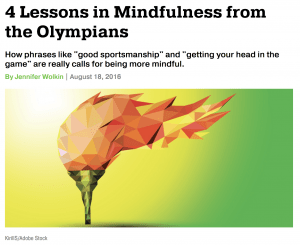
When you watch the Olympics, you can’t help but imagine the countless hours of training all of the athletes have devoted themselves to in order to accomplish the unfathomable feats of stamina, incomprehensible shows of endurance, and extraordinary acts of skill.
And that kind of rigorous training, steeped in competition, often can’t be fully actualized without training the mind as well.
Some of the athletes have been vocal about their penchant for mindfulness meditation as an integral part of their quest for gold. For example, Tom Daley, a diver from Great Britain, told the Telegraph: “You can only do so much in the gym or in the pool.” He continued, “Every morning I do 10 minutes of mindfulness where I do meditation and I use that in competition and every day life… It’s helped me massively and I feel like that’s one of the reasons why this year I’ve been the most consistent that I’ve been in competition.”
Other athletes might be practicing mindfulness without knowing that’s what they’re doing—they just experience the flow state that comes with focused attention.
But what’s clear is that the very mindful way these athletes approach their craft can be seen in their actions. Here are 4 lessons in mindfulness we can learn from the Olympians:
-
Focused Attention is a Skill
A main component of mindfulness is that it helps cultivate awareness by paying attention, on purpose, and in the present moment.
If left to its own devices, our human mind habitually wanders away from the present moment. When we’re not in the here and now, we dwell in the past, grasping and replaying it, or we project into the future, trying to anticipate the unknown (and often catastrophizing).These habitual thought patterns don’t serve our ultimate well-being. This kind of thinking is unhelpful for an athlete who can’t stop thinking about their last failed performance, or one who can’t stop obsessing over what this performance will mean going forward.Have you ever heard a sports announcer say that an athlete must have “been in his head” too much – which caused them to make a simple mistake, but one that cost them the game or race? When we are too focused on what we need to do to win, we lose ourselves in that thought and forget to remain in the moment.
This year, Wilhem Belocian of France, bolted a split second before competitors. The false-start alarm rang out, and the 21-year-old’s hopes of winning a medal in Brazil were over. It was heartbreaking to watch as he collapsed to the ground and punched the pavement before laying on his back with his hands over his face, clearly in agony.
Present moment awareness, honed, is true gift. Equally important is allowing ourselves to grieve, and then forgive ourselves, and move on
-
Compassion is Essential
Mindfulness is more than sitting on a cushion, eyes closed, back aligned, thumbs grazing forefingers, hands resting on thighs. No doubt, this is a feasible and efficient way to cultivate mindfulness, but it’s not the only way.The essence of mindfulness practice is learning to live with more integrity, by nurturing the power to choose our response in any given situation. We begin to live mindfully when we start to cultivate a way of being that embodies mindfulness-based principles like gratitude, loving-kindness, and compassion.
When we are too focused on what we need to do to win, we lose ourselves in that thought and forget to remain in the moment.
For an Olympic athlete, this kind of mindfulness practice is perhaps most reflected in the ability to engage in “good sportsmanship.”A prime example of this is reflected in the actions of Abbey D’Agostino, a Team USA 5,000-meter runner, and Nikki Hamblin of New Zealand. They both collided during a run, fell, and subsequently chose to spend the rest of the race encouraging one another, despite the fact that this had the potential to snuff out either’s chance to qualify for the next run. If someone who has trained and competed for years for this spot can forgive and help out their competition, surely we can see the bigger picture in our own lives as well.
-
Stress is Manageable
Stress-reduction has been noted as a useful byproduct of the practice of mindfulness.
But an appropriate amount of stress is actually adaptive. For athletes especially, the stress-response (also knows as “fight or flight”) elicits an acute surge of adrenaline, and stimulates an increase of blood pumping to the limbs, which helps them as they race towards the finish line. While this mental pressure to beat out the competition is often crucial to success, sometimes the physiological stress response never turns off, and for many of us, stress begins to take the form of negative and unhelpful thinking styles that are often paralyzing.That’s where mindfulness comes in.
A foundational element of mindfulness entails focusing on the sensation of the breath. Engaging the breath provides an opportunity to help lower your heart rate. Diaphragmatic breathing, or “belly breathing,” utilizes the diaphragm, and allows for a fuller, slower, and more rhythmical breath. This is a technique used to reduce stress by breaking shallow patterns of breathing that use the abdomen and the chest. It works, because the breath is intimately connected to the autonomic nervous system and the mind
-
Autopilot is Detrimental to Your Health
The practice of cultivating our attention to the present moment also prevents us from living on autopilot. When we live on autopilot we often fail to notice our automatic thoughts, our innermost feelings, and the subtle physical messages that our bodies send us.For an athlete, who is constantly putting their body through high-intensity training, it can be easy to let minor sensations slide, as the adrenaline itself drowns out some experience of acute pain. Mindfulness particularly allows an athlete to cultivate an acute awareness of their body, to know when and how to take care of it; when it needs a break, when it’s okay to push harder, when it needs to refuel, and when it needs a longer respite to heal.
When we live on autopilot we often fail to notice our automatic thoughts, our innermost feelings, and the subtle physical messages that our bodies send us.
To use Abbey D’Agostino as an amazing example again, after tearing ligaments in her knee, she understood that her season was over. But her message that it is more important to honor where her body is at, than to put it through activity that might exacerbate her injury beyond repair, prevailed nonetheless, and to many, she is still an Olympic winner—the true embodiment of what it means to be an athlete on the world stage.
Sometimes life takes us out of the race that we are in, out of the path we saw ourselves on, but at the same time, this change allows us instead to succeed in things we never imagined.
Go For the Gold
We all have our own golden pursuits. And we all have our own hurdles in life to jump, targets to aim for, and sand traps to avoid. But the real gold medal is a life of thriving, cultivated by paying attention to fully living and enjoying every moment. It really isn’t the destination that matters, but the journey that we take to get there.
How will you take these Olympic gold messages with you as you reach for your life goals?
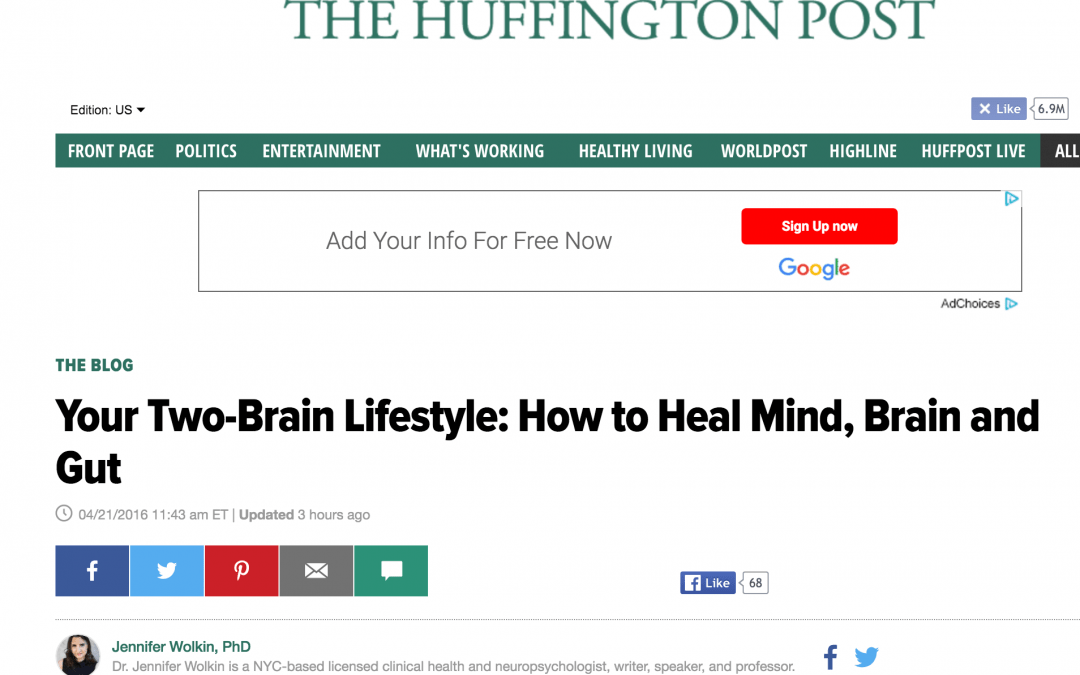
by Jennifer Wolkin | Apr 22, 2016 | Brain Health, Mindfulness, Wellness
This blog post originally appeared in The Huffington Post.

Less might sometimes be more, but two brains are most definitely better than one! How extraordinary then that research continues to confirm a second brain that resides in our guts.
Yes, our gut has its own neural network, the enteric nervous system (ENS). Our ENS doesn’t wax philosophical or make executive decisions like the gray shiny mound in our skulls. Yet, in a miraculously orchestrated symphony of hormones, neurotransmitters, and electrical impulses, both of our “brains” communicate back and forth.
This connection is actually what accounts for those proverbial butterflies in our stomach and has vast implications on our overall health and wellness. Changes in the diversity of the trillions of bacteria that reside in our gut (called the gut microbiota) can impact upon our mental state. And on the flip side, psycho-social factors, including the way we think and feel, have been implicated in gut problems.
Given my personal experience with SIBO, and professional experience with hundreds of women suffering from depression, anxiety, and GI difficulties, I enjoy teaching about how to live what I like to call a “Two-Brain Lifestyle.”
Here are four ways to begin your two-brain lifestyle journey:
1. Diet:
“Diet is a central issue when it comes to preserving our gastrointestinal health, because by eating and digesting we literally feed our gut microbiota, and thus influence its diversity and composition.” –– Professor Francisco Guarner (University Hospital Valld’Hebron, Barcelona, Spain)
There is more and more research linking diets to both our gut and brain health. Certain diets elicit a healthier bacterial balance. Overall, and generally speaking, a diet rich in whole, unprocessed, unadulterated, and non-genetically modified foods help to maintain a proper pathogenic gut bacteria ratio. More specifically, the following are key recommendations:
A. Probiotic Intake:
Probiotics can be found in foods such as yogurt, or kimchi, and can also be taken in supplement form. Among other benefits, probiotics keep the bacterial ecosystem in our gut healthy, which in turn helps keep us healthy overall.
The positive impact of probiotics on gut flora has been widely studied in the last few years. In a 2013 study in Gastroenterology, 12 of 25 healthy women ate a cup of yogurt twice a day for four weeks. The rest of the women ingested no yogurt. All women had pre and post brain scans while being asked to respond to a series of images depicting different facial expressions. Results indicated that the women who ate yogurt were calmer when shown various emotions than the control group. Showing that the yogurt changed the subjects’ gut microbiota, which also modified their brain chemistry.
This means probiotics are potential game changers when treating anxiety and mood difficulties.
B. Low Sugar/Low Simple Carb Diet:
It is hard to say this, given that a love for chocolate has a special place in many of our lives, but excess sugar upsets the balance in the gut by nurturing more pathogenic bacteria, which leads to increased systemic inflammation. And inflammation is a major player in the inception of chronic disease, including mental health difficulties — no good!
In a recent study, researchers fed a group of mice a diet high in sugar and then tested their mental and physical function. The sugar diet negatively impacted the mice’s gut microbiota, impaired their cognitive flexibility, and ability to efficiently adapt to changing situations. The change in gut bacteria also negatively affected the mice’s long-term and short-term memory.
Basically, sugar makes you forgetful and possibly impairs adaptability, but don’t fret, the chocolate craving can still be met: The darker the chocolate, the less sugar. Also, if you don’t want to cut sugar completely out of your diet, eating less overall can still improve wellness.
2. Physical Exercise:
Ever feel like vomiting when you are scheduled for a job interview? That is just a crude reflection of how stress negatively impacts many aspects of our gut, but give exercise a try, it’s a well-known stress-buster!
A 2014 study found that rugby players not only have more diverse microbiota, but also a high amount of a particular bacterial species associated with decreased rates of obesity and metabolic diseases. While the study didn’t separate the effects of exercise, stress, and diet, it certainly provides evidence for exercise’s possible beneficial impact on gut microbiota diversity.
3. Therapy:
Our gut microbiota talk to the brain and impact how we think and feel, and, the way we think and feel has a profound impact upon the gut. Therefore, negative thinking styles and certain emotional states can disrupt gut functioning and even lead to dysfunction and disease.
Cognitive Behavioral Therapy (CBT) is a type of therapy geared toward identifying and reframing negative and counterproductive thought patterns. In a 2003 study of patients with IBS, a significant number reported less pain, bloating, and diarrhea after 12 weeks of CBT. Stands to reason that therapy should be part of a thorough treatment plan for chronic gut upset!
4. Relaxation and Stress-Reduction Exercises:
Studies have shown that stress puts us at risk for dysbiosis, a shift away from healthy gut diversity. This then strips us of a defense against infectious disease, which can potentially wreak havoc on the Central Nervous System (CNS).
Beyond utilizing exercise, which we already talked about, stress reduction and relaxation techniques, such as meditation, help bring the gut environment back to homeostasis. In a recent study from Harvard University affiliates, forty-eight patients with either IBS or Inflammatory Bowel Disease (IBD) took a 9-week session that included meditation training. The results showed reduced pain, improved symptoms, stress reduction, and a decrease in inflammatory processes.
Go with your gut
Just as the best way to boost our brain is by maintaining impeccable gut health vis-a-vis the content of our diet, so too, it might be impossible to heal a distressed gut without considering the impact of stress and our emotions.
So just remember, you are what you eat, and you are what you think, and there are ways to do both more mindfully.
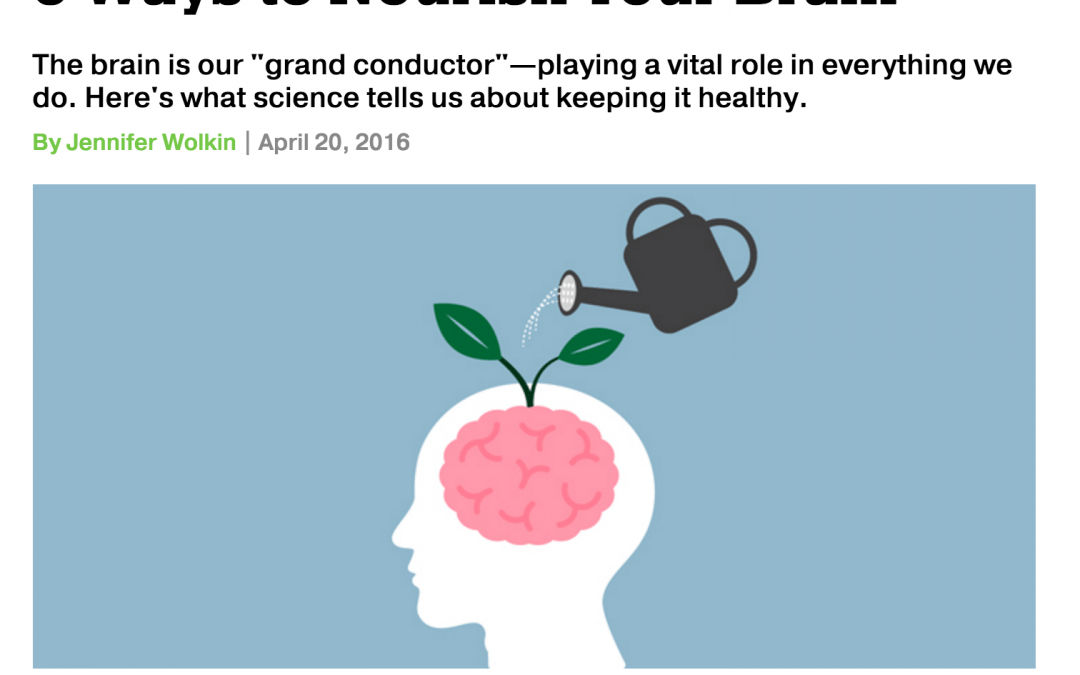
by Jennifer Wolkin | Apr 21, 2016 | Brain Health, Mindfulness, Wellness
This blog post originally appeared on Mindful.Org

The brain is the grand conductor of the symphony of our selves. The brain leads mind and body, and the brain heeds mind and body. The brain plays a role in every thought, feeling, and body sensation we experience. That includes every twitch, every blink, every strum of a guitar, and even every orgasm. That also includes every dream, passion, fear, joy, and deepest desire.
Every memory you consolidated last night while you slept, each micro-movement used to brush your teeth this morning, every smoothie you tasted, step you took, daydream you pondered, daydream you snapped out of, work you intently focused upon, yawn you took, anxiety you felt, drop in blood sugar you experienced, was a manifestation of lots of talking. A plethora of dialogue went on inside of you today, and you need to know it.
Quick Brain Basics:
The brain and the spinal cord make up the nervous system, composed of billions of nerve cells (i.e. neurons) that speak back and forth between the brain and body. What’s the conversation like? Well, the nervous system is at least bilingual, and speaks both electrically and chemically. When neurons (the brain’s cells) are stimulated, an electrical impulse, called an action potential, is created. This eventually leads to the transmission of chemical substances called neurotransmitters, like norepinephrine, dopamine and serotonin, which we know play a huge role in our mood functioning, among a lot of other things.
Why is it so important to know how much chatter the brain is doing? Because to be mindful of the orchestration of our internal states (some in reaction to the external) is to be mindful of the essentiality of nourishing our brains.
The latest scientific research shows that neuroplasticity, the idea that new neurons can be created, makes it very possible for lifestyle to play a big role in maintaining and improving brain function. Of course, as always, nature and nurture dance an exquisite but complex dance, and so there is never one solution or one cause and effect paradigm when it comes to your wellness. Yet, there is something each of us can do to help our brains stay vital:
1. Reduce your stress levels by practicing mindfulness meditation.
Although stress is a temporarily adaptive response to a threat, when it is chronic it becomes maladaptive and can wreak havoc on the central nervous system (CNS). Stress-reduction and relaxation techniques are important for a healthy brain. A widely used relaxation-inducing technique is meditation. Mindfulness meditation has been shown to be particularly effective. Studies have indicated that the amygdala, known as our brain’s “fight or flight” center and the seat of our fearful and anxious emotions, decreases in brain cell volume after mindfulness practice. Mindfulness meditation has been shown to help ease psychological stresses like anxiety, depression, and pain. Research is still parsing out the exact mechanisms, but many agree that on a cognitive level, mindfulness’s ability to cultivate attention on purpose, in the present moment, and non-judgmentally, helps reduce the stress elicited by past and/or future oriented thinking.
2. Get your blood pumping through exercise.
Exercise is a life force, and there are many reasons why it is a crucial part of basic brain hygiene. One reason is that exercise actually raises serotonin levels (most antidepressants focus on the production of serotonin). That’s just the tip of the iceberg though with regards to exercise’s benefits, which is why it is always in my top three recommendations to clients who want to thrive cognitively as they age.
3. Use it, so you don’t lose it, by engaging in mental stimulation.
Lifelong students have the right idea when it comes to staving off age-related brain decline. Continued learning actually promotes brain health, and might actually create new neural connections. This kind of neuroplasticity is a handy defense against future cell loss. So in essence, taking a stab at a crossword puzzle, or enrolling in a continuing education course can help build cognitive reserves. The biggest bang for the brain are tasks that are challenging, varied, and novel.
4. Nourish your body and brain with balanced nutrition.
Our brain’s health is dependent on our many lifestyle choices that mediate gut health, including most notably diet i.e., reduction of excess sugar and refined carbohydrates, and increased pre and probiotic intake. Poor gut health, elicited by dysbiosis (a shift away from “normal” gut microbiota diversity), may contribute to disease, and has been implicated in neurological and neuropsychiatric disorders like multiple sclerosis, autistic spectrum disorders, Parkinson’s disease, and even Alzheimer’s disease. Further, there is now research that suggests that depression and anxiety are mediated by poor gut health as well.
5. Stay positively connected to yourself and others by socializing.
Joining a community center, or even a meet-up group adventure is actually an investment in your future. Research continues to support the positive impact of social interaction on the brain. So much so, that studies even go so far as indicating that social interaction is a key to warding off dementia, including the Alzheimer’s. Even basic exchanges with people keep our brains stimulated as it searches for thoughts and a way to organize them into appropriate communication bytes. Also, let’s not forget that being part of a social network often elicits healthy behaviors, most notably joining a walking group, or engaging in other group exercise. So, keep your friends and family close to help maintain cognitive processes.









